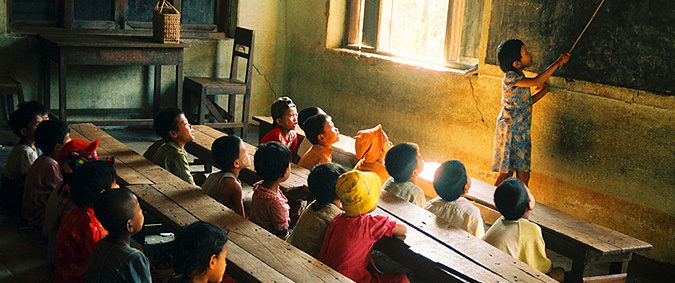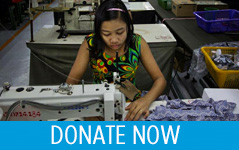About Myanmar

Context and Situation Analysis
Macro trends in Myanmar
Myanmar’s triple reform process is marked by democratic & accountable governance, national reconciliation, peace & development & economic reform. Progress on these fronts, as it has been for any country in transition has been mixed. The relatively free & fair national elections led to the landslide victory of the National League for Democracy, led by Daw Aung San Suu Kyi who won 79 per cent of the seats overall. However, there continue to be systemic impediments to a democratic process as the military still retain 25 per cent of reserved seats at all levels of Parliament, and are beyond the reach of a civilian government; temporary identity cards of a large number of minority religious groups were withdrawn, disenfranchising them in the November 2015 elections. The nation-wide ceasefire negotiations (NCA) resulted in an agreement that was signed government on 15 October 2015 and ratified by Parliament, albeit by only 8 ethnic armed organizations (EAOs). While there was consensus agreement of all EAOs on text, negotiations broke down as for a set of reasons, the government did not want 3 EAOs to sign. The agreement was a victory of a kind for the peace process as the NCA mandates a political dialogue who outcomes will lead to constitutional change. Efforts have been afoot to persuade the other ethnic armed organizations to get on board and sign the NCA. Myanmar’s economic reforms have led to some immediate gains reflecting increases in economic growth and foreign direct investment, diversified investments & some employment generation. With steady growth rates between 6.5 per cent to 6.9 per cent during the period 2012-2014, the economy is expected to grow 8.1 per cent in 2016, which is up 0.1 percentage points from last month’s estimate.
For 2017, economists project growth of 8.3 per cent. Foreign Direct Investment in Myanmar increased to 381.392 USD million in September of 2015. The main drivers of growth are increased gas production, services, construction, foreign direct investment, strong commodity exports and a stronger performance in agriculture. Macroeconomic data, including poverty and Millennium Development Goal (MDG) indicators also suggest improvements between 2005-2010 on many counts. The national poverty rate fell from 32 per cent to 26 per cent between 2005-2010. However these figures are national averages, that obfuscate economic inequalities based on geographical location, economic status, race, religion, ethnicity, and gender. Further, while there are no clear data, land confiscations are reportedly increasing, particularly to clear areas for infrastructure projects and natural resource exploitation. On 21st February 2014, state-run newspaper New Light of Myanmar reported that the regime had acknowledged just 745 incidents of land confiscation – with over 500,000 acres of land confiscated by the military over the last five decades – and had solved 688 of these cases. However, on the same day, Democratic Voice of Burma (DVB) reported that the report of the Parliamentary commission tasked with investigating reports of land confiscation contained 8,478 cases of filed land confiscation complaints, of which only 423 (5 per cent) had been settled so far. Forced evictions and displacement of small farmers are reported to have negatively impacted housing, health, education, livelihoods and security of person.
These reforms follows 60 years of military rule; self-imposed isolation followed by western trade sanctions; foreign investment in extractive industries with little diversification, lack of investment in infrastructure & high value-added sectors; natural disasters & decades of ethnic armed conflict – with continuing distrust between parties to the conflict & recurring outbreaks of violence between the army & ethnic armed organizations. This relegated Myanmar to the status of a LDC.
Myanmar women in these macro processes
Women constitute 52 per cent of Myanmar’s population. An androcentric society exacerbated by militarism has contributed to women bearing the disproportionate brunt of socio-economic & political marginalization, although women have been resilient, contributing survivors. Peace is a critical issue for Myanmar. There can be no development without peace & vice versa. The labor force participation rate for persons aged 15–64 is 67 per cent (85 per cent for men and 51 per cent for women) & the employment-to-population ratio for persons aged 15–64 is 64.4 per cent (82 per cent for men ; 48 per cent for women). Women constitute 10 per cent of all members of both Houses of Parliament. Women also suffer all forms of violence with poor access to justice grounded in a militarized culture which strongly reinforces discriminatory cultural norms, values and practices that violate women; an outdated penal code and a plural legal systems spawning differing standards for women and a lack of legal mechanisms for legal effect, inadequate capacities of duty bearers and women and poor quality and fragmented services. There is currently only 1 woman Minister holding 2 Union portfolios and 1 woman chief minister in Kayin State out of a total of 14 chief ministers for states and regions. Women tend to be concentrated at the mid & lower levels of the executive and have borne the burden of conflict. Women and their concerns could be better represented in the peace process. The nationwide ceasefire agreement had 2 women out of a total of 32 members – 1 out of 16 on the government team and 1 out of 16 on the Nationwide ceasefire co-ordination team made up of EAOs (16). The NCA and the Framework for Political Dialogue – the two landmark peace-related policies had 3 and 4 gender provisions respectively. If women and their concerns are not at the core of peace talks & long term peace building processes, it is not likely that post conflict planning & resources will address their priorities.
The government’s massive triple reform agenda –economic, political reform and national reconciliation - is by and larger framed in generic terms, although the Framework for Economic and Social Reform and the Comprehensive National Development Plan (2011-2030) do mention women in certain realms. The FESR addresses violence against women and trafficking and provides for increased health financing for a voucher system for maternal and child healthcare, special funds for destitute mothers, maternal and child health. However the National Strategic Plan on the Advancement of Women (2013-2022), launched in 2013 by the Ministry of Social Welfare, Relief and Resettlement provides a strategic opportunity to address gender equality and women’s rights in the government’s reform agenda, based as it is on the 12 areas of women’s lives outlined in the Beijing Platform for Action, 1995. Gender equality and women’s rights can be well embedded in the government’s reform agenda by effectively implementing the NSPAW and ensuring that gender equality perspectives are mainstreamed into sectoral policies, plans and programs across government ministries. This can be enhanced by Government’s participation in the CEDAW review process, July 2016 by implementing the CEDAW Committee’s Concluding Comments in line with the NSPAW via the Myanmar National Committee for Women’s Affairs, (an inter-ministerial gender mainstreaming mechanism), and through sectoral plans, as well as the Universal Periodic Review Recommendations.
Against this background, UN Women has prioritized Governance, Peace and Security as a priority focusing on the immediate peace process & peace building - women’s economic empowerment & access to justice. UN Women Myanmar’s key result areas focused on the immediate process include: Impact Area 4 - Peace and security and humanitarian action are shaped by women leadership and participation with the following outcomes 1. WPS commitments/accountability frameworks adopted & implemented in conflict & post-conflict situations (O 4.1); 2. Peace talks, recovery, conflict resolution, peace building planning include women’s participation, promote & protect women’s human rights (O.4.2); UN Women Myanmar’s key result areas focused on long term peace-building include: Impact Area 2: Women, especially the poorest and most excluded are economically empowered and benefit from development with the following outcomes and Impact Area 3: Women and Girls live a life free from Violence with the following outcomes: laws, policies, strategies adopted & implemented in line with HR standards & informed by women survivors of violence to prevent & respond to VAWG (O 3.1). The office will continue its co-ordination mandate.
Related stories:
- Empowering refugee girls on the Thai Burma border
- In Myanmar, efforts to bring women to the centre of peacebuilding
